The Xiaomi Mi MIX 2S Review: Fantastic Overall Value
by Andrei Frumusanu on June 29, 2018 8:00 AM EST- Posted in
- Mobile
- Smartphones
- Xiaomi
- MI MIX 2S
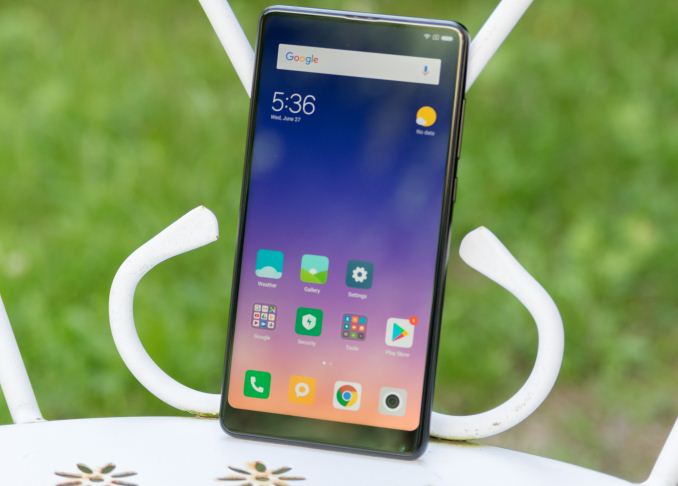
Xiaomi has been a vendor we’ve been working with for a few years now, but never got to the point where we really wrote an in-depth article on. Today as the company is eyeing on going public with an IPO in Hong Kong and an ever increasing advance on European markets, it’s the best time to actually shine a light on one of the company’s latest flagships – the Mi MIX 2S.
The Mi MIX 2S is actually a successor to last year’s Mi MIX 2, which in turn was a successor to the original Mi MIX which was a pioneer design in terms of bezel-less smartphones and ahead of the curve in terms of screen-to-body ratio metrics. The original Mi MIX was meant to show off the company’s design prowess – but it actually evolved into a mass product with the MIX 2S. This year’s new Mi MIX 2S iterates on the design and updates the internals to the latest hardware.
| Xiaomi Mi MIX 2S | |
| SoC | Qualcomm Snapdragon 845 4x Kryo 385 Gold @ up to 2.80 GHz 4x Kryo 385 Silver @ up to 1.77 GHz Adreno 630 @ up to 710 MHz |
| Display | 5.99-inch 2160x1080 (18:9) IPS LCD |
| Dimensions | 150.9 x 74.9 x 8.1 mm 191 grams |
| RAM | 6GB / 8GB LPDDR4x |
| NAND | 64GB / 128GB / 256GB |
| Battery | 3400 mAh Qualcomm Quick Charge 3.0 Qi Wireless Charging |
| Front Camera | 5MP, 1.12µm pixels, f/2.0 |
| Primary Rear Camera | 12MP, 1.4µm pixels, f/1.8 Sony IMX363 |
| Secondary Rear Camera | 12MP, 1.0µm pixels, f/2.4 2x Zoom Samsung S5K3M3 |
| SIM Size | 2x NanoSIM |
| Connectivity | 43 global bands (8GB+256GB model only), 4x4 MIMO, 2.4/5G WiFi, WiFi Direct, WiFi Display, NFC |
| Interfaces | USB 2.0 Type-C; no 3.5mm |
| Launch OS | Android O (8.0) with MIUI 9 |
| MSRP Launch Price |
6GB/64GB: ¥3299 / $449 / €423 6GB/128GB: ¥3599 / $490 / €462 8GB/256GB: ¥3999 / $544 / €513 |
Digging into the hardware, that’s where we see the biggest changes compared to the Mi MIX 2. The 2S sports a latest generation Snapdragon 845 SoC with 4x Kryo385 Gold/A75 at 2.8GHz paired with 4x Kryo385 Silver/A55 at 1.77GHz. I was impressed with the overall performance of the S845 in our Galaxy S9 review so I’m expecting the MIX 2S to perform no worse.
The phone comes in 64, 128 and 256GB NAND storage variants, with 8GB RAM configuration reserved for the 256GB SKU, while the smaller ones come with 6GB standard.
The Mi MIX 2S sports a 3400mAh battery which is covered by a ceramic back on which we find the fingerprint sensor as well as a very iPhone X inspired camera housing – one of the major design changes compared to the MIX 2.
Obviously the display is the defining feature of the MIX series and here we see a 5.99”, 18:9 aspect ratio IPS LCD screen with a resolution of 2160x1080. Xiaomi was indeed one of the pioneers in bringing out this type of small bezel designs out to market. Way the company achieved this is by shifting all front sensors and camera to the bottom of the phone.
The top of the phone hides a very narrow speaker grill for the ear-piece. It’s not the greatest earpiece but it does serve its purpose well, and actually acts as a second stereo speaker alongside the bottom main unit. For this review I’m trying to reintroduce audio quality evaluation, starting with speaker measurements in a section later in the article.
While the front camera positioning is generally functional, it has the large drawback that front-camera operation becomes quite cumbersome in portrait mode as most of the time it’s looking “up” to you and for right-handed people taking a selfie means sometimes covering up the camera with your thumb, an issue that can be solved by alternatively using the fingerprint sensor as the shutter button. In landscape mode (with the camera on the upper right side) this is less of an issue. In general as I think there’s vastly more right-handed people and most front-camera operation happens in portrait mode, the camera should have been put in the left corner of the bottom of the phone.
On the right side of the phone we find the volume rocker and the power button underneath.
As we mentioned earlier, one of the larger design changes compared to the Mi MIX 2 is the camera setup. The 12MP f/2.0 shooter has been replaced with a newer sensor from Sony; the IMX363 increases the pixel pitch from 1.25µm to 1.4µm and the lens also has a larger aperture at f/1.8. In addition to the main sensor we see a new secondary module with a 12MP Samsung S5K3M3 sensor with 1µm pixel pitches and an f/2.4 aperture lens with a 2x optical zoom.
At the bottom of the phone we find the USB-C port alongside a microphone and the main speaker grill. The main speaker seems to be very much downward firing, but otherwise performs adequately. There’s no headphone jack here, which is a great disappointment and what I think is a misstep for the industry as a trend.


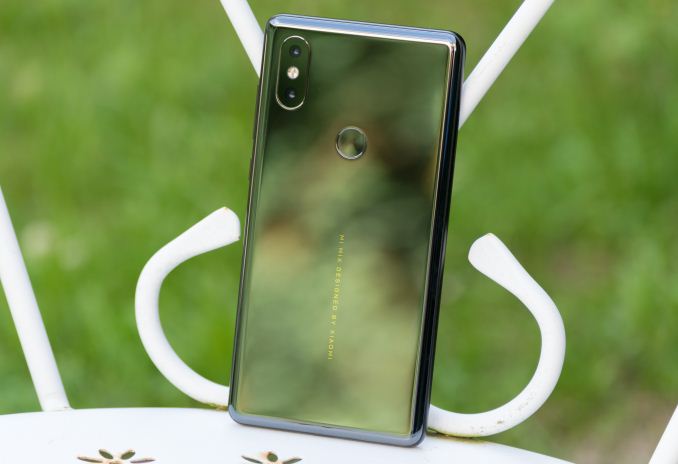

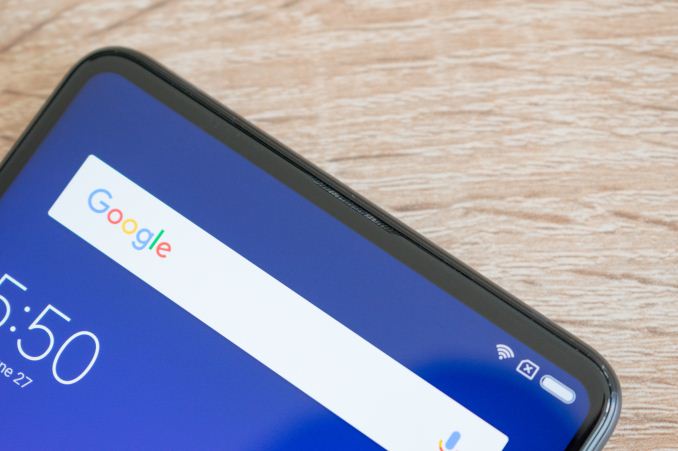
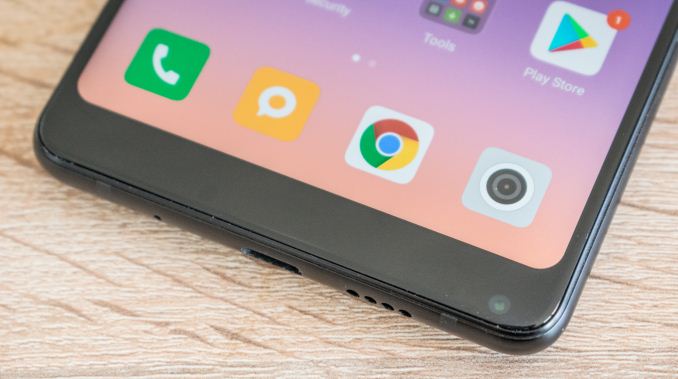
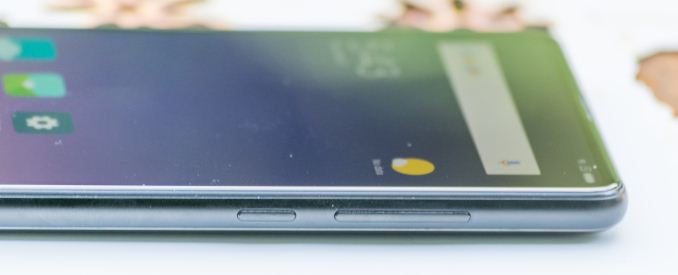
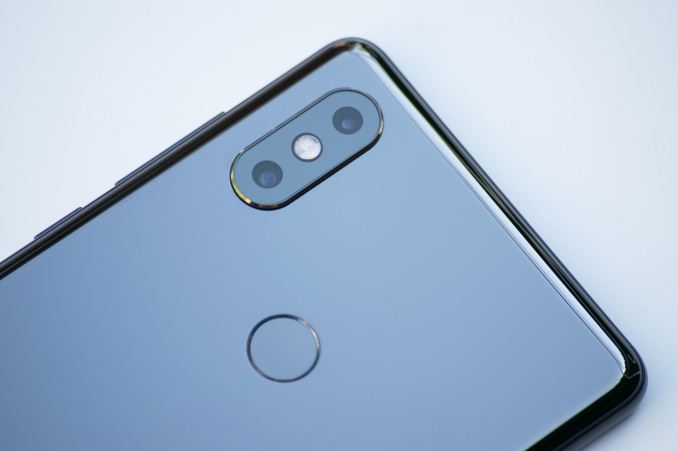









61 Comments
View All Comments
onisad - Friday, June 29, 2018 - link
"It’s clear that the nearest competitor to the MIX 2S is the Galaxy S9+"It's a good review but I think it would have benefited from direct comparisons to the OnePlus 6, as they seem more direct competitors to me, particularly in Europe as you mention: prices and hardware offering between the 2 devices are close, both phones are available to buy online rather than through carriers (afaik), etc.
Always nice to see the Anandtech methodologies applied to phone reviews though, thanks!
Andrei Frumusanu - Friday, June 29, 2018 - link
I'll be receiving the OnePlus 6 next week so I avoided making any comparisons to it without having had the phone in my hands. Obviously it's a valid contender.beersy - Friday, June 29, 2018 - link
I'm sure I'm a minority here, but isn't the screen of a phone the most important part? Frankly I don't game on my phone all the time, but I am always using the display. I would rather have a slightly lessor processor and/or RAM and those funds be diverted to the most important part of a Smartphone. This is clearly a situation where specs were more important than user experience IMHO. And the placement of the front facing camera is just ridiculous.StormyParis - Friday, June 29, 2018 - link
Agreed on the screen (not only latency, but reflections and black levels are also pet peeves for me) The front facing camera is an issue only if you make a lot of video calls. For shooting selfies, having to hold the phone upside down is not an issue.jospoortvliet - Saturday, June 30, 2018 - link
Agreed, I am hoping the next version will have a good AMOLED screen...Fergy - Sunday, July 1, 2018 - link
How often do you use the front camera? It is only meant for selfies and short video calls right? I prefer this solution to a notch.Holliday75 - Tuesday, July 3, 2018 - link
For me it would be a non-issue. I've used the front facing camera on my Pixel 2 maybe 2 or 3 times. I'm sure some users it would be much bigger problem.StormyParis - Friday, June 29, 2018 - link
Nice review thank you. Most compare it to the OnePlus 6 and the Honor 10 (or is it View 10 ?), with mixed results. Also, Samsung is being increasingly aggressive with promos on their current and older-gen devices. The 500€ space is very crowded.I myself buy one step down, Redmi line and Mi Max not Mix. $200 buys you a whole lot of phone these days, I feel reviews skew way too much to the high end.
GreenReaper - Saturday, June 30, 2018 - link
Still rocking my Redmi 2 2GB, but the discontinuation of battery replacements is an issue (and OS - LineageOS worked great, until it didn't). I found an off-brand replacement batter, but as I suspected it doesn't last as long as the original when new, and appears to have issues delivering peak current when below 50%. It'd be nice if they lasted for stockpiling!serendip - Saturday, June 30, 2018 - link
I'm happy with Xiaomi making devices likea this as long as it keeps the Redmi and Mi Max lines. I'm willing to stick with a fast midrange SoC like the 650, 660 or 636 and still get MicroSD storage, a robust metal body, IR blaster and a headphone jack. The Mi Max 2 is the best value when it comes to large and cheap phones with almost-premium parts.